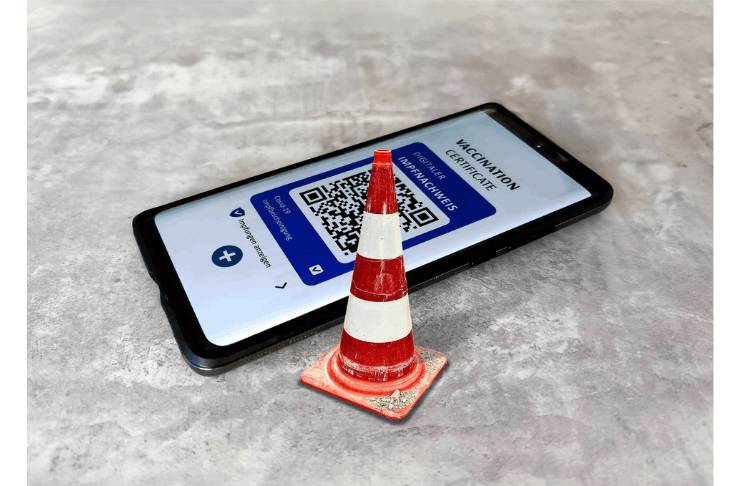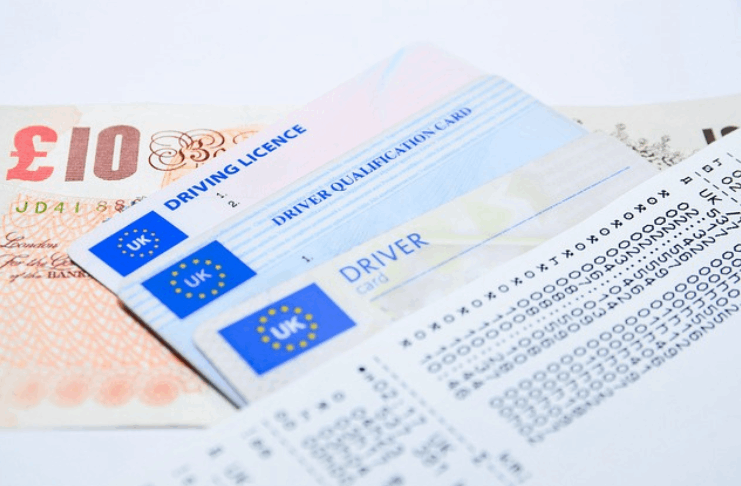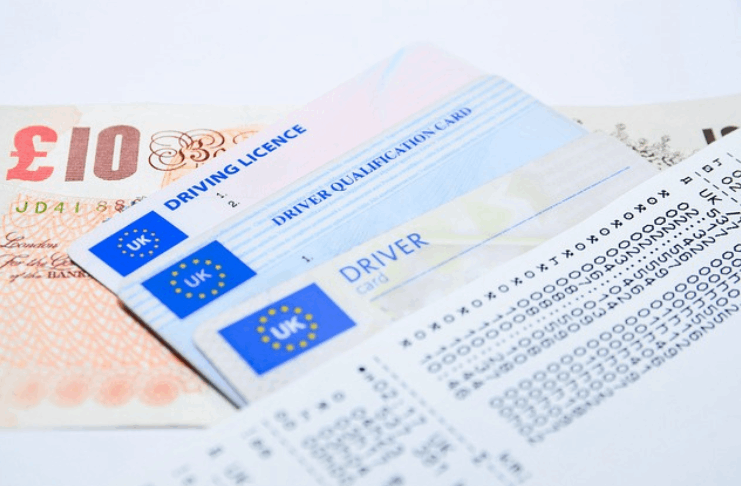Unlock the potential of the Kusum Solar Scheme, which offers a revolutionary proposal providing a modern 90% subsidy by the Indian government. Harness the power of solar energy and deliver significant economic benefits for individuals, farmers, and businesses.
This comprehensive guide provides step-by-step instructions, eligibility criteria, and necessary documentation for the application process, enabling you to successfully navigate through the application process. By taking advantage of the 90% subsidy of the Kusum Solar Scheme, you can deeply impact energy consumption and enjoy substantial cost savings.
Embrace the green future and seize the great opportunities presented by this transformative solar initiative. Let’s embark on this journey and explore the immense possibilities of the Kusum Solar Scheme.
Eligibility Criteria
Understanding the eligibility criteria is crucial for participating in the Kusum Solar Scheme. The aim of this initiative presented by the Indian government is to promote the adoption of solar energy in various sectors. This comprehensive guide provides you with essential information on eligibility.
Whether you are a homeowner, farmer, or a commercial organization, we will guide you through specific requirements, enabling you to embrace sustainable energy solutions and reap the significant benefits of this scheme. By being familiar with the eligibility criteria, you can determine your suitability and embark on a journey towards a greener future.
Residential Eligibility Requirements
Specific eligibility requirements must be met for residents to participate in the Kusum Solar Scheme. These requirements ensure that homeowners are able to fully utilize the benefits of the scheme. Here are the important criteria to be aware of:
- Ownership or Legal Rights: Applicants must be legal owners or tenants of residential property where the solar system will be installed.
- Roof Area: Residential properties must have a suitable roof area to accommodate solar panels. The scheme may specify minimum requirements regarding the size and orientation of the roof.
- Electricity Connection: The property must have a secure electricity connection from the grid, enabling the solar system to be connected in an organized manner.
- Compliance with Local Regulations: Applicants should comply with local building regulations, requirements, and permissions related to installing solar systems.
By meeting these residential eligibility requirements, homeowners can pave the way towards a sustainable and energy-efficient future by harnessing the power of solar energy through the Kusum Solar Scheme.
Agricultural Eligibility Requirements
The Kusum Solar Scheme provides significant benefits to the agricultural sector by enabling farmers to utilize solar energy for irrigation and agricultural needs. Specific eligibility requirements must be met to qualify as an agricultural applicant for the scheme. Here are important criteria to consider:
- Land Ownership: Applicants must have agricultural land where the solar system will be installed. Proof of ownership or a long-term lease agreement may be required.
- Irrigation Requirement: There should be a minimum requirement for irrigation in agricultural land, which may depend on the specific guidelines of the scheme.
- Irrigation Source: The proposed solar system should operate irrigation pumps or other agricultural equipment for effective water usage.
- Grid Connection: An agricultural property should have a secure electrical connection with the grid for integrating the solar system efficiently.
By fulfilling these agricultural eligibility requirements, farmers can embrace sustainable agriculture engineering by utilizing green energy gathered through the complete solar scheme. As a result, they can reduce dependence on traditional energy sources and enhance the capacity of their irrigation systems.
Commercial and Industrial Eligibility Requirements
The Kusum Solar Scheme provides benefits to commercial and industrial organizations, enabling them to adopt solar energy solutions and reduce energy costs. Eligibility requirements must be met for the scheme as a commercial or industrial applicant. Here are important criteria to consider:
- Business Registration: Applicants should be registered with commercial or industrial organizations such as companies, factories, or institutions.
- Energy Consumption: A commercial or industrial organization should have significant energy consumption, making them eligible for setting up solar systems.
- Roof or Land Availability: The organization should have suitable roof or land available to install solar panels or solar energy production systems.
- Electricity Infrastructure: The property should have a strong electricity infrastructure with a secure connection to the grid, ensuring organized integration of the solar system.
By fulfilling the commercial and industrial eligibility requirements, businesses can transition to sustainable energy sources, reduce their carbon footprint, and achieve long-term cost savings through the Kusum Solar Scheme.
Required Documents
Special documents are required to ensure a simple and skilled application process for the Kusum Solar Scheme. These documents play a crucial role in verifying eligibility and making the implementation of solar energy systems convenient. This guide highlights the necessary documents to successfully participate in the scheme.
By understanding the document requirements, applicants can prepare necessary paperwork in advance, facilitating a smooth application process. From ownership proof to technical guidelines, these documents are essential to assess eligibility and ensure compliance with the scheme’s directives.
Let’s delve into the essential documents in detail to help you streamline and efficiently manage the application process.
List of Necessary Documents for Residential Applicants
Residential applicants interested in benefiting from the Kusum Solar Scheme will need to provide special documents to support their application. These documents are crucial for verifying eligibility and ensuring smooth implementation of solar energy systems for residential properties. Here is a list of important documents required for residential applicants:
- Ownership Proof: Documents proving ownership of residential property such as property title, sales documents, or ownership certificate.
- Identification Proof: Valid identification documents of the applicant, such as Aadhaar card, PAN card, or passport.
- Address Proof: Documents verifying the residential address, which may include utility bills, Aadhaar card, or ration card.
- Building Plan and Layout: Copy of building plans and layout showcasing the available roof area for solar panel installation, if applicable.
- Electricity Connection Details: Supporting documents confirming the existing electricity connection, such as electricity bills or connection agreement.
By providing these important documents, residential applicants can ensure a smooth application process and increase their chances of successfully participating in the Kusum Solar Scheme.
List of Required Documents for Agricultural Applicants
Agricultural applicants interested in benefiting from the Kusum Solar Scheme will need to submit specific documents to support their application. These documents are crucial in verifying eligibility and ensuring smooth implementation of solar energy systems for agricultural fields. Here is a list of essential documents required for farming applicants:
- Proof of Land Ownership: Documents confirming ownership of the agricultural land where the solar system will be installed or long-term lease agreements.
- Agricultural Land Documents: Supporting documents such as revenue records, land registration documents, or relevant agricultural certificates.
- Irrigation Requirement Details: Document clarifying the irrigation needs of the agricultural land, which may include records of water consumption or related agricultural reports.
- Electricity Connection Documents: Evidence of existing electricity connection to operate irrigation pumps or other agricultural equipment, such as electricity bills or connection agreements.
- Government Identification: Valid identification documents of the applicant, such as Aadhar card, PAN card, or any other government-issued identification.
By providing these important documents, agricultural applicants can ensure that their application process is smooth and increase the chances of successfully participating in the Kusum Solar Scheme.
List of Essential Documents for Commercial and Industrial Applicants
Commercial and industrial organizations interested in benefiting from the Kusum Solar Scheme will need to submit specific documents to support their application. These documents are crucial for verifying eligibility and ensuring smooth implementation of solar energy systems for commercial and industrial purposes.
Here is a list of essential documents required for commercial and industrial applicants:
- Business Registration Documents: Evidence of business registration, such as Certificate of Incorporation, Partnership Deed, or other relevant documents.
- Energy Consumption Records: Documents showing the energy consumption of the commercial or industrial organization, such as electricity bills or energy assessment reports.
- Site Ownership or Lease Agreement: Documents proving ownership of the site where the solar system will be installed or lease agreements authorizing installation on the property.
- Electric Infrastructure Details: Supporting documents providing information about the existing electric infrastructure, including electricity connection agreements, load assessment reports, or distribution board details.
- Government Identification: Valid government-issued identification documents of the authorized representative of the commercial or industrial organization, such as Aadhaar Card, PAN Card, or any other government-issued identification.
By providing these essential documents, commercial and industrial applicants can ensure that their application process is smooth and enhance the likelihood of successfully participating in the Kusum Solar Scheme.
Application Process
The application process is crucial to benefit from the Kusum Solar Scheme. By following a clear process, individuals, farmers, and businesses can ensure their eligibility and submit their applications.
This guide provides comprehensive information on the application process, guiding you through each step and offering valuable insights to make your journey smooth. Explore the application process for the Kusum Solar Scheme and empower yourself to embrace solar energy and its benefits with ease and proficiency.
Step-by-Step Guide to Applying for the Kusum Solar Scheme
To apply for the Kusum Solar Scheme and make the most of its benefits, a systematic approach is required. To assist you in this process, we have prepared a step-by-step guide summarizing the key phases of applying for the scheme. By following these steps, you can ensure a smooth and successful application process. Let’s dive into the step-by-step guide:
- Understand the Scheme: Familiarize yourself with the objectives, eligibility criteria, and benefits of the Kusum Solar Scheme to align with your needs.
- Gather Necessary Documents: Collect required documents such as ownership proof, identification proof, and address proof as specified by the scheme.
- Determine Application Method: Decide between applying online through the designated portal or offline by visiting relevant government offices.
- Fill in the Application Form: Provide accurate information with necessary details and complete the application form ensuring all fields are filled correctly.
- Attach Supporting Documents: Submit relevant documents as per instructions, ensuring they are in the specified format and fulfill the scheme’s requirements.
- Review and Submit: Review all provided information before submitting the application and ensure all required documents are attached.
- Track Progress and Follow Up: Monitor the progress of your application through the designated portal if necessary or follow up with relevant authorities.
By following this step-by-step guide, you can navigate the application process for the Kusum Solar Scheme securely and enhance your chances for a successful application. Embrace the benefits of solar energy and contribute to a green future through this transformative scheme.
Online Application Process
The Kusum Solar Scheme provides the convenience of an online application process, making it easy to submit your application for the benefits of solar energy. By following the online application process, you can apply for the scheme from the comfort of your home. Here is a step-by-step guide for the online application process:
- Visit the Official Portal: Navigate to the designated official website or portal for the Kusum Solar Scheme application process.
- Register or Create an Account: If required, provide the necessary details in the application process and register yourself by creating a user account on the portal.
- Read Instructions and Guidelines: Familiarize yourself with the provided instructions, guidelines, and eligibility criteria on the portal to ensure that you meet the requirements.
- Fill in the Application Form: Provide accurate information in the online application form, ensuring all fields are filled correctly.
- Upload Required Documents: Scan and upload the necessary documents in the specified format on the portal.
- Review and Verify: Double-check all provided information, verify the accuracy of uploaded documents, and review the completed application form.
- Submit the Application: After being satisfied with the application details, submit the application form electronically through the portal.
- Receive Confirmation: Upon submission, you may receive confirmation or approval of your application. Save or print this confirmation for future reference.
By following this online application process, you can conveniently apply for the Kusum Solar Scheme, harness the power of solar energy, and avail the benefits provided by the scheme.
Offline Application Process
The Kusum Solar Scheme also provides an offline application process for those who prefer traditional methods. In this method, applicants are allowed to physically submit their applications at designated government offices. Here is a step-by-step guide for the offline application process:
- Get Application Form: Visit the nearest government office or specified location to obtain the application form for the Kusum Solar Scheme.
- Read Instructions and Guidelines: Carefully read the provided instructions, guidelines, and eligibility criteria with the application form and ensure compliance with the rules.
- Fill Out the Application Form: Fill out the application form manually with accurate and complete information in all required fields.
- Attach Supporting Documents: Gather the specified necessary supporting documents as per the instructions, ensure they are copied properly, and can be used.
- Review and Verify: Double-check the filled application form and attached documents for accuracy and completeness.
- Visit Designated Office: Visit the designated government office mentioned in the instructions and submit your application form and supporting documents.
- Submit Application: Submit the completed application form and supporting documents to the authorized officials in the office.
- Receive Receipt or Confirmation: Obtain a receipt or confirmation from the office as proof of submission. Keep this receipt safe for future reference.
By following this offline application process, you can successfully submit your application for the Kusum Solar Scheme and take a step towards obtaining the benefits of solar energy.
Calculation and Distribution of Subsidies
Understanding the calculation and distribution of subsidies is crucial for participants in the Kusum Solar Scheme. The scheme determines aspects that individuals, farmers, and businesses can benefit from due to the solar energy system. This guide details the process of calculating and distributing subsidies, providing participants with essential information to maximize the benefits of the scheme. Dive into the details yourself and unravel the intricacies of subsidy calculation and distribution under this progressive scheme.
How to Calculate 90% Utilization Rate
Understanding the calculation behind the 90% utilization provided by the Kusum Solar Scheme is crucial for comprehending the financial benefits of the scheme. Examining the rationale behind the utilization rate aids participants in better evaluating the financial impacts of their solar energy installations. Here is a brief overview of calculating the 90% utilization rate:
- Project Cost Estimation: The total cost of a solar energy project is calculated by consolidating expenses related to solar panels, inverters, mounting structure, wiring, and other installation costs.
- Eligible Utilization Amount: The utilization amount is calculated by multiplying the project cost with the utilization rate. In the case of the Kusum Solar Scheme, the utilization rate is 90%.
- Utilization Distribution: The utilization amount is disbursed to the participant either as a direct financial benefit or as a reduction in project costs.
By consolidating the project cost and utilizing the predefined utilization rate, participants can calculate the utilization amount they will receive. This calculation provides essential information about the available financial assistance under the Kusum Solar Scheme, enabling participants to make informed decisions and maximize the benefits of the scheme.
Factors to Consider in Subsidy Calculation
Understanding the factors and metrics involved in subsidy calculation is crucial for participants to evaluate the financial impacts of their solar energy installations. By comprehending the factors and metrics included in subsidy calculation, participants can make informed decisions and maximize the financial benefits provided by schemes like the Kusum Solar Plan.
Here are the key factors considered in subsidy calculation:
- Project Cost: The total cost of a solar energy project, including the installation cost of solar panels, inverters, mounting structures, and other related components.
- Solar System Capacity: The installed capacity of the solar system, measured in kilowatts (kW) or megawatts (MW), determining the capacity for electricity generation.
- Subsidy Rate: A pre-determined percentage of the project cost that qualifies for subsidy, which is 90% in the case of the Kusum Solar Plan.
By considering these factors and utilizing the appropriate subsidy rate, participants gain insights into the amount of subsidy they will receive, enabling them to make informed decisions and potentially leverage the financial benefits of the Kusum Solar Plan.
Timeline for Subsidy Distribution
Understanding the timeline for subsidy distribution is important for participants in the Kusum Solar scheme. This information helps individuals, farmers, and businesses to organize their financial plans and expectations accordingly. This guide provides details on the general timeline for subsidy distribution under the scheme.
By knowing the approximate timeline for subsidy distribution, participants can better manage their financial arrangements and also have a sense of when they can expect to receive the subsidy amount. Let’s explore the timeline for subsidy distribution in the Kusum Solar scheme:
- Application Verification: Once the application is submitted, it goes through a verification process by authorities to ensure compliance with the scheme guidelines. This verification process usually takes a few weeks to a few months.
- Approval and Acceptance: Once the application is verified and approved, the subsidy amount is sanctioned by the relevant authorities. The timeframe for approval and acceptance can vary, taking weeks to months.
- Funds Allocation: After approval, funds are allocated for the subsidy. The timing for fund allocation depends on budgetary provisions and administrative processes, typically taking a few weeks to a few months.
- Distribution Process: Eligible participants receive the subsidy amount according to the scheme guidelines. The distribution process depends on administrative procedures, coordination between authorities, and participants, which can take several weeks to a few months.
It is crucial that the timely timeline for subsidy distribution can depend on various factors such as discipline, administrative efficiency, and budgetary considerations. Participants should stay in touch with relevant authorities for updates on the progress of their subsidy distribution.
Information on Payment Process
Understanding the payment process is crucial for participants in the Kusum Solar Scheme, as it helps them understand how the subsidy amount is distributed and what the payment methods are. In this guide, we provide essential information about the payment process under the scheme.
By understanding the payment process well, participants are assisted in understanding clearly how they will receive the subsidy amount and make necessary arrangements accordingly. Let’s learn about the important aspects of the payment process in the Kusum Solar Scheme:
- Method of Payment: The subsidy amount is typically distributed through electronic payment methods, such as bank transfer or direct benefit transfer (DBT). Participants will need to provide their bank account details to make the payment process convenient for them.
- Transfer of Subsidy Amount: Once the subsidy amount is approved and allocated, it is transferred to the bank account provided by the participant. The transfer is carried out by responsible designated authorities to implement the scheme effectively.
- Communication and Confirmation: Participants may receive communication or confirmation regarding the transfer of the subsidy amount. This communication can be provided by authorities through specified emails, SMS, or other mediums.
- Timeline for Payment: The timeline for payment can depend on organizational procedures, fund availability, and other factors. Participants should stay in touch with relevant authorities to stay updated on the payment timeline.
By understanding the payment process in the Kusum Solar Scheme, participants can ensure the smooth transfer of the subsidy amount and manage the necessary financial arrangements. It is advisable to stay in contact with designated authorities to keep updated on the progress of payment and address any questions or concerns.
Establishment and Committee
Ensuring careful consideration of various factors is essential for the successful purpose and operation of solar energy systems. This guide provides a comprehensive overview of important aspects related to solar establishments, committees, and maintenance in the context of the Kusum Solar Scheme.
Let’s delve into understanding the selection of vendors, guidelines for establishment and committee, and the significance of regular maintenance and monitoring.
Selection of Vendors for Solar Installations
Choosing the right vendor for a successful solar installation under the Kusum Solar Scheme is crucial. A certified and qualified vendor can ensure a convenient and skillful installation process of the solar plant, along with guaranteeing reliable performance of the solar setup. In this guide, we consider important criteria when selecting vendors for solar installations. Let’s examine which factors should be taken into account:
- Expertise and Experience: Evaluate the vendor’s knowledge enhancement and experience in solar installations. Check their certifications, industry affiliations, and records of successful projects.
- Reputation and Customer Reviews: Study the vendor’s reputation in the business and read customer reviews. Positive reviews and recommendations serve as evidence of their credibility and service quality.
- Compliance with Standards: Ensure that the vendor adheres to industry standards, regulations, and safety guidelines. They should be knowledgeable about local permit requirements and comply with construction regulations.
- Product Quality: Assess the quality of the vendor’s solar panels, inverters, and other components. Select certified brands that have proven performance and reliability.
- Price and Warranty: Pay attention to the vendor’s pricing structure and warranty terms. Compare quotations from multiple vendors to ensure competitive pricing and favorable warranty coverage.
By considering these factors and conducting diligent research, participants of the Kusum Solar Scheme will be able to select a vendor that meets their requirements and provides a high-quality solar installation.
Kusum Solar Scheme Vendor Options for Solar Installations
Choosing the right vendor for a successful solar installation under the Kusum Solar Scheme is crucial. A reliable and competent vendor can ensure smooth installation and optimal performance of the solar system. Here is a list of some types of vendors that you may consider as partners for your solar installation:
- Solar Equipment Manufacturer: These vendors directly manufacture solar panels, inverters, and other equipment. They can offer competitive pricing, specialized technical support, and reliable warranties.
- Solar System Integrator: Integrators specialize in designing and installing complete solar energy systems. They procure equipment from various manufacturers and ensure integration for optimal system performance.
- EPC (Engineering, Procurement, and Construction) Contractor: EPC contractors provide organized services including engineering design, procurement of equipment, and construction of the solar installation. They manage the entire project and ensure perfection on schedule.
- Authorized Dealer: Authorized dealers maintain contractual relationships with solar equipment manufacturers and supply their products directly to customers. They offer expertise in system design, installation, and post-installation support.
- Local Solar Installation Companies: Locally specialized companies in solar installation can provide personalized service and local expertise. They are familiar with local regulations and permitting processes and can provide prompt support.
When selecting a vendor, consider their expertise, experience, reputation, pricing, and warranty terms. It is recommended to obtain quotes from multiple vendors and compare their offerings to make an informed decision. By choosing a reputable vendor, you can ensure you receive a high-quality solar installation and make proper use of the benefits of the Kusum Solar Scheme.
Guidelines for Installation and Committee
Proper installation and committee are crucial for the successful implementation and efficient operation of solar energy systems under the Kusum Solar Scheme. Adherence to installation guidelines ensures that installations are done in effective ways according to security standards. Pay attention to important guidelines for installation and committee processes:
- Technical Requirements: Adhere to the specified technical guidelines and requirements set forth by the scheme. This includes selecting appropriate solar panels, inverters, and other components to fulfill the technological standards.
- Site Assessment: Conduct a comprehensive site assessment for the installation location of solar panels to determine their suitability. Consider factors such as solar exposure, shading, structural support, and availability of appropriate locations.
- Permits and Approvals: Obtain necessary permits and approvals from local authorities as required. During installation, comply with construction codes, electrical regulations, and safety guidelines.
- Good Installation Practices: Follow best installation practices in the industry for installing solar panels, including proper mounting, wiring, and grounding techniques. Ensure adherence to security protocols and guidelines for system and personnel safety.
- Commissioning and Testing: Once installation is complete, organize thorough commissioning and testing to verify the correct operation of the solar system. This includes checking electrical contacts, performance testing, and inspection of safety measures.
By following these guidelines, participants in the Kusum Solar Scheme can ensure that their solar energy system is installed and commissioned in a systematic and effective manner. Adhering to the guidelines ensures the highest performance, safety, and long-term benefits from the scheme.
The Importance of Regular Maintenance and Monitoring
Regular maintenance and monitoring are crucial in maximizing the performance, longevity, and efficiency of solar energy systems under the Kusum Solar Scheme. Regular maintenance ensures that solar installations operate at their peak capacity and deliver the expected benefits. Some key reasons highlighting the importance of regular maintenance and monitoring include:
- Optimal Performance: Regular maintenance, including cleaning solar panels and inspecting components, helps in operating at its peak capacity, thereby increasing energy production and reducing degradation due to dirt, debris, or system failures.
- System Longevity: Proper maintenance and monitoring can prolong the lifespan of solar systems. Early identification of issues and timely resolution can prevent major breakdowns and ensure the longevity of components, reducing the need for costly replacements.
- Ensuring Safety: Regular maintenance allows for the identification and mitigation of safety risks associated with solar systems. Inspection of electrical connections, wires, and structural integrity can identify potential hazards and ensure the safety of the system and individuals.
- Early Issue Detection: Regular monitoring can quickly identify performance discrepancies, faults, or failures. Timely identification and resolution of issues help in reducing downtime and optimizing energy production.
- Energy Improvement: Monitoring energy production and consumption patterns can identify opportunities for energy improvement. Through data analysis, participants can adjust their energy usage habits and optimize the performance of their solar systems for maximum efficiency.
By maintaining a consistent focus on regular maintenance and monitoring, participants of the Kusum Solar Scheme can ensure the long-term performance, safety, and benefits of their solar installations. Regular maintenance and monitoring activities contribute to the reliability and stability of solar energy systems, enabling participants to fully leverage the benefits of the scheme.
Frequently Asked Questions
As participants increasingly engage with the Kusum Solar Scheme and seek to harness the benefits of solar energy, they often have questions about various aspects of the scheme. In this section, we provide answers to commonly asked questions to offer clarity and guidance. Here are some common questions and their answers:
- What is the Kusum Solar Scheme?
The Kusum Solar Scheme is a government initiative in India aimed at promoting solar energy for irrigation, rural areas, and agricultural sectors. This scheme provides subsidies for solar installations and encourages the adoption of pollution-free and sustainable energy through the integration of administrative facilities.
- Who is eligible to participate in the Kusum Solar Scheme?
Eligibility criteria for the Kusum Solar Scheme are based on specific components of the scheme. Generally, individuals, farmer cooperatives, agriculture experts, rural residents, and some commercial and industrial entities are eligible to participate.
- How to apply for the Kusum Solar Scheme?
The application process for the Kusum Solar Scheme involves gathering necessary documents and submitting the application online or offline following the guidelines. Detailed instructions and application forms can be obtained from government websites or designated government offices.
- What percentage of subsidy is provided under the Kusum Solar Scheme?
Under the Kusum Solar Scheme, a subsidy of 90% is provided for specific categories. This means that 90% of the project cost is considered eligible for subsidy based on the scheme guidelines.
- How long does it take for subsidy distribution?
The timeline for subsidy distribution depends on the administrative procedures of the scheme and the availability of funds. It is recommended to stay in touch with key officials to track the progress of subsidy distribution.
These frequently asked questions are intended to clarify general information and concepts within the Kusum Solar Scheme. For specific and detailed information regarding the scheme’s official guidelines and insights tailored to your circumstances, it is advised to seek guidance from designated authorities.
Conclusion
Applying for the Kusum Solar Scheme and availing the benefit of 90% subsidy is an important opportunity to embrace renewable energy and its benefits. By following a step-by-step process, understanding eligibility criteria, and submitting the necessary documents, participants can confidently navigate the application process.
The Kusum Solar Scheme provides significant subsidies making solar installations affordable for individuals, farmers, and businesses. Participants can enjoy reduced electricity costs and contribute to a greener future by utilizing solar energy.
Embark on your journey to apply for the Kusum Solar Scheme, stay informed, seek guidance from designated authorities, and embrace the power of solar energy. Take a decisive step towards sustainability through this scheme’s generous 90% subsidy.








